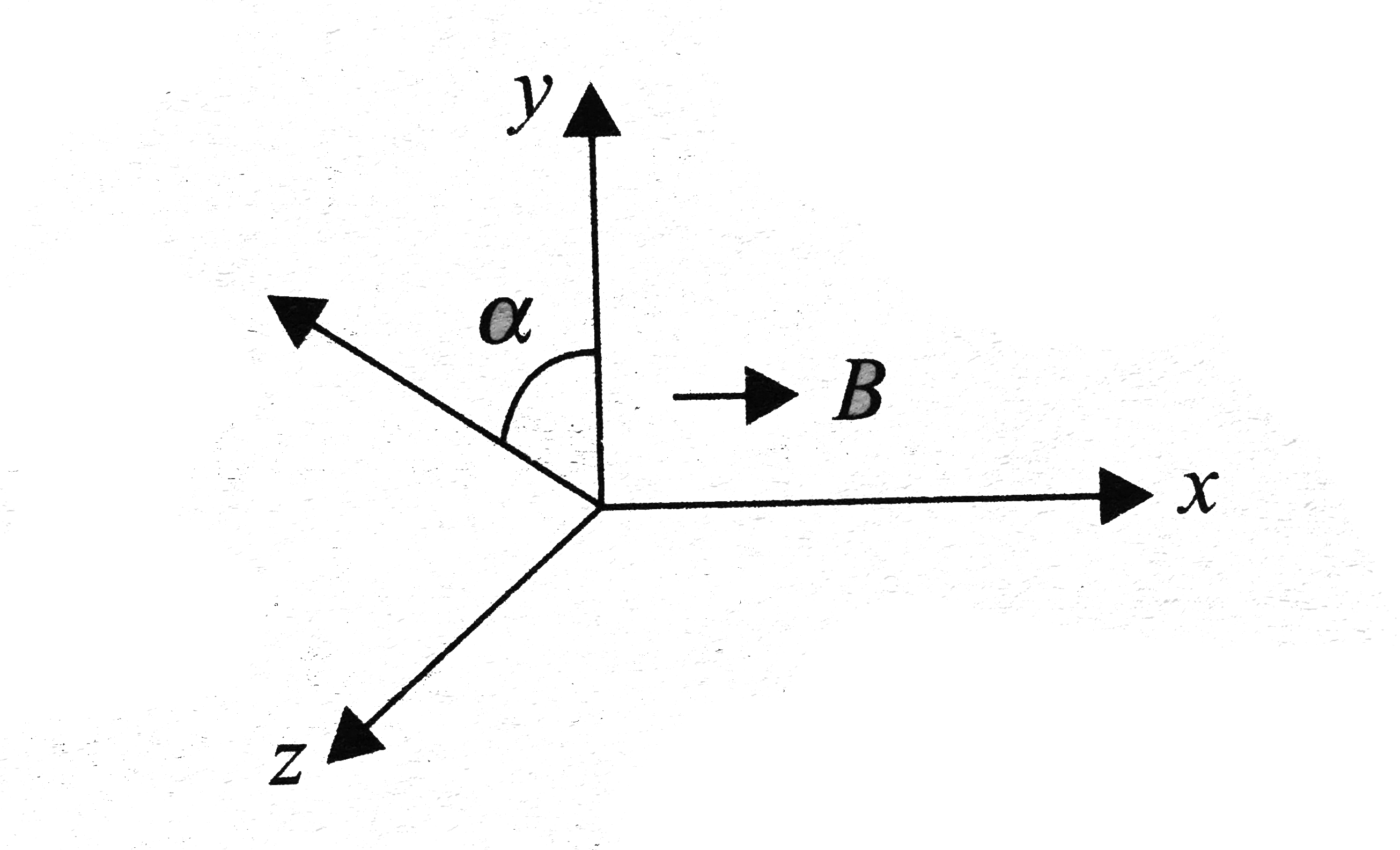A uniform magnetic field B exists in a region. An electrons projected perpendicular to the field goes in a circle. Assuming Bohr's quantization rule for angular momentum, calculate
(a) the smallest possible radius of the electrons
(b) the radius of the nth orbit and
(c) the minimum possible speed of the electron.
(a) To move in circle, necessary centripetal force is provided by magnetic force.
mv2r=Bev
v=berm
mvr=nh2π
mBermr=nh2π
r2=nh2πeB
(b) v=Berr
vn=Bemrn=Bem√nh2πeB
=√heB2πm2
Topper's Solved these Questions
Similar Questions
Consider a neutrom and an electron bound to each other due to gravitational force. Assuming Bohr's quantization rule angular momentum to be valid in this case, derive an expression for the energy of the neutron-electron system.
View SolutionAn electron is orbiting is a circular orbit of radius r under the influence of a constant magnetic field of strength B. Assuming that Bohr postulate regarding the quantisation of angular momentum holds good for this elerctron, find
(a) the allowed values of te radius r of the orbit.
(b) the kinetic energy of the electron in orbit
(c ) the potential energy of insteraction between the magnetic moment of the orbital current due to the electron moving in its orbit and the magnetic field B.
(d) the total energy of the allowed energy levels.
(e) the total magnetic flux due to the magnetic field B passing through the nth orbit. (Assume that the charge on the electronis -e and the mass of the electron is m).View Solution
Knowledge Check
- Question 1 - Select One
A uniform magnetic filed B exists in a region. An electron is given velocity perpendicular to the magnetic field. Assuming Bohr's quantization rule for angular momentum.
Calculate the minimum possible speed of the electron.A√heBnm2B√he2πBm2C√h.eB2πBD√hem22πB - Question 2 - Select One
A uniform magnetic filed B exists in a region. An electron is given velocity perpendicular to the magnetic field. Assuming Bohr's quantization rule for angular momentum.
Calculate the radius of the nth orbitA√nh2πeBB√nheB2πC√nhe2πBD√nhB2πe - Question 3 - Select One
The radius of circular path of an electron when subjected to a perpendicular magnetic field is
AmvBeBmeBeCmEBeDBemv
An electron orbiting around a nucleus has angular momentum L. The magnetic field produced by the electron at the centre of the orbit can be expressed as :
View SolutionAn electron is projected in a perpendicular uniform magnetic field of 3×10−3 T . If electron moves in circle of radius 4 mm , then linear momentum of electron is
View SolutionWhich of the following angular momentum is not possible for electron in Bohr’s orbit?
View SolutionA uniform electric field and a uniform magneitc field exist in a region in the same direction An electron is projected with velocity pointed in the same direction the electron will
View SolutionIn a region of space, a uniform magnetic field B exists in the x-direction. An electron is fired from the origin with its initial velocity u making an angle α with the y direction in the y-z plane. In the subsequent motion of the electron,
 View Solution
View Solution

